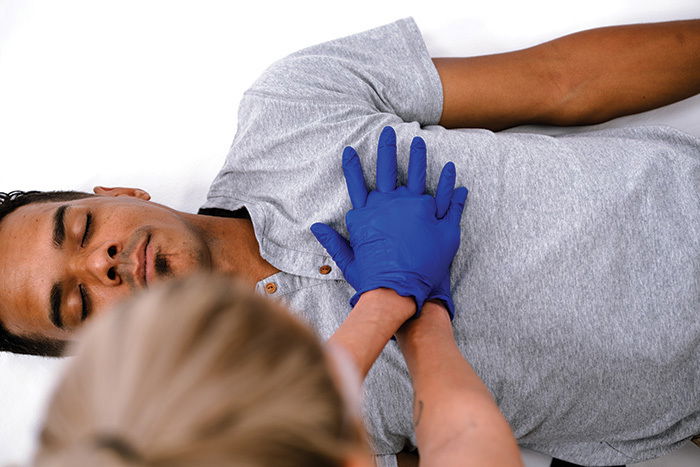HOW TO PERFORM CARDIOPULMONARY RESUSCITATION (CPR)

What is Cardiopulmonary Resuscitation (CPR)?
CPR stands for cardiopulmonary resuscitation. It can help save a life during cardiac arrest, when the heart stops beating or beats too ineffectively to circulate blood to the brain and other vital organs.
What is the purpose of CPR and why is it important?
CPR increases the likelihood of surviving cardiac arrest, when the heart stops beating or beats too ineffectively to circulate blood to the brain and other vital organs
CPR should be used when you see someone who is unresponsive and is not breathing or only gasping.
CPR works by keeping a person’s blood flowing until healthcare professionals can help them.
There are two different types of CPR:-
- Hands-Only CPR: Hands-only CPR is an easy-to-learn skill that could save a life. It involves calling 8-1-1, sending someone for the AED if available and then giving continuous chest compressions. It only takes minutes to learn.
- CPR With Rescue Breaths: While Hands-only CPR can be lifesaving, learning full CPR is still very important. Getting trained in full CPR – combinations of chest compressions and rescue breaths – will increase your confidence and may enable you to help in other types of emergencies. Full CPR is ideal for all ages, and especially for people who are more likely to experience respiratory emergencies such as children and infants.
How to Perform CPR on a Baby - A Quick Guide to Infant Cardiopulmonary Resuscitation
How to perform CPR on an infant
How to perform first aid and CPR on a choking infant / baby?
Child CPR - Lay Rescuer
CPR for Child Drowning: Quick How to Guide
Choking Child First Aid - New 2020 AHA / ILCOR Guidelines | CPR Certification Institute
Conscious Child Choking
Unconscious Child Choking
Adult CPR
EEFR-Emergency First Response Video












